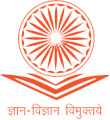多媒体:课堂教学过程中的一种技术
Ashvini Joshi.1*
1Sri Satya Sai Engineering,博奥塔邦邦邦印度。
DOI:http://dx.doi.org/10.12944/cwe.7.1.05
改善学生的技术之一符合学术需求,并帮助他们开发英语语言技能在教室教学和学习过程中提供多媒体。多媒体课堂为学生提供了与不同文本交互的机会,使他们在主流学院课程的任务和内容中给予他们稳固的背景。写作旨在了解在教室里使用多媒体的一些优势。此外,技术在课堂上的参与不能否认提供积极点,以提高教学质量,并提供更多的教学外语技术。该研究采用了一种定性方法,在教室里使用多媒体进行深度描述。在这种写作中绘制了传统教室和多媒体课堂之间的差异。写作表明,使用多媒体作为教学过程中的技术教授英语的一些优势。通过媒体,老师可以为学生提供更多机会,表达他们的意见并在课程中享受。高度存在和动力也为学生带来了积极的方面,以便他们可以提高他们的技能。
复制以下内容以引用本文:
多媒体:课堂教学过程中的一种技术。Curr World Environ 2012; 7(1):33-36 Doi:http://dx.doi.org/10.12944/cwe.7.1.05
复制以下内容以引用此URL:
多媒体:课堂教学过程中的一种技术。中国环境科学,2012;7(1):33-36。2012;7;23-32。可以从://www.a-i-l-s-a.com/?P=1758
文章出版历史
| 已收到: | 2012-03-20. |
|---|---|
| 公认: | 2012-05-27 |
介绍
把英语作为外语来学习的学生人数逐年稳步增长。要想在大学里成功,这些学生不仅要发展语言学,还要发展学术技能。这些技能包括通过阅读学术文章、撰写可接受的学术散文、进行研究和报告来使用英语获取和清晰地表达知识。在印度尼西亚,从学生上初中开始,学校就开始教英语。然而,由于某些原因,他们中的许多人不知道如何说和写英语。教育领域的一些人说,课程需要改变,包括教他们英语的目的,教材和方法。为了满足学生的学术需求,帮助他们发展强大的英语语言技能,有许多方法需要应用。在课堂教学中使用多媒体是提高学生学习能力的技术之一。多媒体在课堂上的使用将提供与不同的文本互动的机会,给学生一个坚实的背景任务和内容的主流大学课程。此外,由于教育技术被期望成为课程的重要组成部分,EFL学生必须精通访问和使用电子资源。 This article describes the method that could help the students to develop their skills in English through multimedia: print text, film, video, radio, computer, and Internet. As students, they must be dealt with the subject found in resource material; also they are able to choose the resources that best suitable the points they wish to make. However, the courses are not included research skills, making research reports to challenging their English language skills.
多媒体教室
获得教育学位的时间是基于日益过时的模型:在课堂上如此多的时间以成绩的形式为学生提供学生,并且可以在凭证中兑换许多收据一定程度的形式......今天的教育刚刚开始考虑从达到的技能和知识时转移认证的基础。
传统上课堂情况是教师站在学生面前,给出解释,通知和指导。他们通常使用粉笔在黑板上写一些东西。随着技术的发展,这些技术需要略微修改。在课堂上使用多媒体不能再被拒绝。这将使教师可以让学生更幸福,更享受在课程中的更多机会。传统教室有多媒体教室的不同设置。学生座位在行和前面的黑板。老师站在课前,给出了讲座。与传统教室相比,多媒体教室环境从传统教室里有很大差异。传统教室有行的座位和前面的黑板。 In the multimedia classrooms, students’ seat can be modified according to the situation needed. Inside the classrooms, all the equipment is available and makes the students feel comfortable to study. They sit at wide tables in comfortable chairs and have plenty of room to spread work. Furthermore, they also have the opportunity to move the furniture around for group discussions. A large teaching station is located at the front and to one side of the room. Inside the station cabinet there are controls for the rooms built – in equipment. The use of multimedia described here makes use of print texts, film and Internet to develop and enhance linguistics and knowledge. Through their interactions with multimedia texts on topic of interest, students become increasingly familiar with academic vocabulary and language structures. As they pursue sustained study of one content area through focus discipline research, the students become actively engaged in the process of meaning construction within and across different media. Working though the complex intermingling of meanings, embedded within different texts encourages students to make connections as they build a wider range of schemata, which are then available to help them grasp future texts. Using print, film and Internet as resources for studying provides students with opportunities to gather information through stimuli that will stimulate their imaginations, engage their interest and introduce them to the raw materials for analysis and interpretation of both language and context. Students develop solid foundation in several subject areas and become “content experts” in one. Thus they greatly increase their overall knowledge base, as well as their English language and critical literacy skills, facilitating their performance in future college courses. Although various studies support the application of multimedia in the classroom, Liu, Jones and Hem street (1998) point out that the design of multimedia is useful when technology is to have any effect on learning. One of the main purposes of software in writing is to facilitate the development of academic writing skills for students through the use of the objects matter for writing assignments. The program is presented as a simulation game to interest and motivation. Students using the program found themselves in the virtual world of education.
电脑互联网
计算机技术给了我们互联网,它有各种用途。在教育方面,互联网为许多学科部门的学生提供了广泛的英语文本收集。在大学里普遍使用电脑来教写作之前,学生们在传统的教室里见面,并被教写标准的文章。指令通常是由站在讲台后面的教师或由老师批改学生的课文错误来体现的(Blair, 1997)。随着个人电脑的迅速普及,许多高等教育机构开设了强调文字处理技能和协作评论的“计算机写作课程”;计算机技术给我们带来了互联网,这是一种印刷和视觉资源都不可避免地捆绑在一起的电子媒介。在点击鼠标,文本资源为学生提供多样的真实英语语言文字处理各种跨学科的主题,在每个web页面链接,学生阅读印刷文本的优点与好处立即视觉强化所提供的图片和幻灯片,促进印刷和视觉信息处理的协同效果。整合互联网还能增加学生的学习动机。学生们渴望开始上课,经常很早就到电脑室,上网,开始自己的研究。 They also often stay after class to continue working on the Internet. Overall, students develop greater confidence in their ability to use English because they need to interact with the Internet entirely through reading and writing. Using the Internet for focus discipline research not only teaches higher order thinking skills, but also promotes critical and social literacy as students encounter a variety of information, synthesizing that information through cooperation and collaboration with their peers. Members of focus discipline groups generally form strong multicultural friendship fostered by their collaborative efforts throughout the semester. However, the general uses of computers are rarely found in traditional classroom. For instance, students attend the regular classes that were taught to write the standard essay. With the technology use, the students do not only literate the ability to read and write but also to be able to understand music, video, hypertext and networked communications. Whitaker (1995) points out clearly that technology as something to expand human potential rather than substitute for it and which enhances the thought process rather than cripples it.
打印文本
在提出具有复杂阅读的学生的印刷文本,其中包含认知苛刻的语言,并引入了广泛的词汇量。但是,这些文本可能很难理解。这是建议以印刷和视觉文本出现。通过阅读打印文本将是图片或幻灯片显示的即时视觉。在编写使用多媒体的类别中,学生观看所选视频小说。观看学生有关视频和分配的论文主题的问题,然后分为头脑风暴群体。他们讨论并制定了他们的小组中的主题。然后他们在介绍在其他群体前面之前制作粗略的草稿。显然,在多媒体课堂学生中,学生学习如何集体风暴,如何使用草稿群体以及如何批评其他演示。然而,从互联网中受益,学生必须学会导航,然后评估信息在那里找到。 The students must know how to use search engines, web browsers, and met sites evaluate information in terms of its validity and reliability, as well as its relevance to the topic (Carlson, 1995). Therefore to guide the students in determining whether an Internet source is reliable and credible, students should consider the source and time frame, as well as the evidence supporting the information provided. As the students become more comfortable surfing the Internet, they discover it can be used to develop not only content area knowledge but also to improve their language skills. They know how to compose an essay, using information from the sources they have found in the Internet; also they learn how to cite references in a bibliography.
Kasper(1997)进行的一项研究说明了使用诸如印刷,电影,视频,互联网等多媒体的英语教学鼓励他们对分配编写一个关键分析。总体而言,学生的成就显着增加。92%的学生通过部门阅读和写作考试。此外,他们对讨论的反馈非常积极。他们表达了对他们使用英语的能力的信心。它们将这种改进归因于文本教中英语的多媒体模型,并在其他课程和电影和互联网中提供有用的信息,帮助他们使物质更容易理解,因为他们看到,听到,并听到关于该主题的信息。
这部电影
薄膜可用于提供视觉材料。根据卡斯珀和歌手(1997年)的说法,学生们可以阅读印刷文本并观看电影,这部电影可以澄清理解,巩固概念和加强学习。预计学生可以完全理解视觉和口头的理解。通过观看完整的电影,学生希望了解学术话语的各个领域,如心理学,环境科学等,扩大口头和书面透视(Kasper和Singer,1997)。来自佛罗里达州国际大学(1994年)的一项学习案例,研究了一个多媒体课堂,学生观看视频小说汤姆琼斯(新的六部分A&E版本)和猩红色粉丝(Anthony Andrews和Jane Seymour)。查看后,该课程询问有关电影和分配论文主题的问题,帮助他们老师要求学生集体风暴。
结论
通过多媒体的互动,学生逐渐熟悉了学术词汇和语言结构。与互联网的连接将有利于增加学生的动机。学生们渴望开始上课,经常很早就到电脑室,上网,开始自己的研究。他们也经常在课后留在网上继续工作。总的来说,学生需要通过阅读和写作与互联网互动,从而增强了他们使用英语能力的信心。利用多媒体可以让学生通过媒体收集信息,激发他们的想象力和兴趣。同时,将这种技术与教学意义相结合,将创造出一种成功的教学方法。
在我们的想象中,我们享受和珍惜教育随需应变。我们希望未来已经是因为内心深处,我们都是终身学习者。我们只想学习容易,个性化。这种愿景令人迷人,但我们必须在现在生活和工作。今天,现实远离梦想。对教育工作者的挑战很清楚。我们还必须在我们为年轻人提供的产品,服务和解决方案中建立严格的质量标准。我们必须学习如何为我们的所有学生准备越来越复杂的生活。我们必须准备学生掌握改变。
参考
- 卡尔森,厄尔·“评估来源的信誉:批判思想教学中缺失的联系”,心理学教学,22(1):39-41(1995)。城市纽约大学。(1994),CUNY ESL工作队的报告,CUNY:教学资源中心,纽约。Kasper,Loretta F.(1997),“基于内容为基于内容的教学方案的ESL学生的教学计划”,英语对于特定目的,Vol。16. PP。309-20。Kasper,策略“,PostScript,Vol。16.第2号,第5-17页。^ Richard消融,“Goldstein的灯光在南安普敦,”品种,1966年8月10日。Vol。213,12号。
- 鹰计算机,http://en.wikipedia.org/wiki/Eagle_Computer#Multi-Image_models,检索2010-06-27
- 多媒体变为多图像,http:// www.avsquad.com/page8/page8.html,检索到2010-04-30
- Vaughan,1993年,多媒体:使其工作(第一版,ISBN 0-07-881869-9),奥斯本/麦格劳 - 山,伯克利,PG。3.
- 品种,1996年1月1日至7日。
- Stewart,C和Kowalski,A. 1997,媒体:新的方式和含义Loretta F和罗伯特歌手。(1997)。“阅读,语言习得和电影(第二版),Jacaranda,Milton,昆士兰州,澳大利亚。pp.102。
- 詹妮弗故事,从下一个在线,2002年。
- 林奇,耶鲁大学网络风格手册,Http://info.med.yale.edu/caim/manual/sites/site_structure.heml

这项工作是在授权下获得的知识共享归属4.0国际许可。








